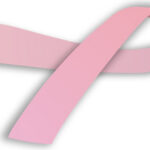Finding a breast lump can be a frightening experience for a woman. Although most breast lumps are not caused by cancer, there is always the chance that the lump could be a serious medical issue. Only about 20% of lumps found in a breast will turn out to be malignant cancer. So what are the causes of the other 80%? Let’s take a look at some of the more common causes.
Before your doctor can begin to determine what a lump in the breast may be, there are some basic questions that will need to be asked. These are questions you should be thinking about before you see your doctor as he or she is very likely to ask you them.
When did you first notice the lump? Is there only one, or can you feel multiple lumps? Is the lump tender or sore? Does the size of the lump vary, especially in relation to your menstrual cycle? Have you had any trauma to the breast? Are you experiencing any other problems with your breasts, such as changes in the skin color or changes in the shape of the breast? Has there been any discharge from the nipple, or changes to the nipple itself? Lastly, have you been otherwise well?
You do not need to have comprehensive answers to each of these questions. You doctor may ask you some or all of them, depending on what the suspicion is. Just keep them in mind, as many of the answers can lead a doctor toward different exams and testing.
Fibrocystic Beast Changes
By far the most common cause of a lump in the breast is a condition known as fibrocystic breast changes. This produces a smooth and round lump. These lumps often get bigger just before a woman begins menstruating. Oftentimes there is more than one of these lumps at a time, and they can often appear in clusters. Some clear discharge can come from the nipple, but not in all cases. These lumps are NOT cancer.
Mastitis
This is an infection which can cause a firm and tender lump. Generally there will be only one lump with mastitis. If it’s palpated carefully, the lump will often feel like it is a fluid-filled sac. The nipple is often involved in mastitis, producing some retraction, and even some cracking. Mastitis will also make the breast warm, tender and can make the skin turn red and inflamed. General symptoms of fever, chills and fatigue are very common with mastitis.
Adenofibroma
An adenofibroma is a begin tumor. Because it is begin, it does NOT have the ability to spread to other parts of the body and is not considered life threatening. These lumps will often feel mobile under the skin, as they are not firmly attached to the underlying skin. Adnofibromas will appear singly, and are usually firm and have very well defined margins. These lumps are generally not painful, although they are capable of growing quite fast.
Breast Abscess
An abscess is a fluid-filled sac that is infected by a bacterium. These lumps will be tender, warm to the touch and feel like they contain fluid (because they do). The skin over the lump will be red and inflamed. Changes in the surface of the skin are common, including dimpling and retraction of the nipple. A person with an abscess will feel very sick, with a fever, fatigue and general feeling of being sick.
Paget’s Disease
This is a form of breast cancer that is very slow growing. It usually appears with symptoms directly on the skin. The skin will appear red and peeling. The nipple usually becomes involved, often to the point of being very red and scaly.
No list of breast lumps would be complete without a mention of the most serious cause – Breast Cancer. A comprehensive overview of the many types of breast cancer is not possible here. Most breast cancers will appear as hard lumps, generally fixed to the overlying skin. Often the nipple will become deformed, especially as the breast lump becomes larger. Breast cancer lumps are usually found singly. They are also not tender in most cases. If there is nipple discharge, it can contain blood. Bloody nipple discharge in combination with a lump is a very bad sign and highly suggestive of breast cancer.
This list of breast lumps is not meant to be comprehensive. It is also not intended to be used as a diagnostic tool. If you feel a lump in your breast, you need to get it examined by a doctor. Only working with your doctor can you determine the cause of the lump. Remember, most lumps are NOT cancer, but in order to catch the ones that are early, you should see a doctor as soon as you can.



